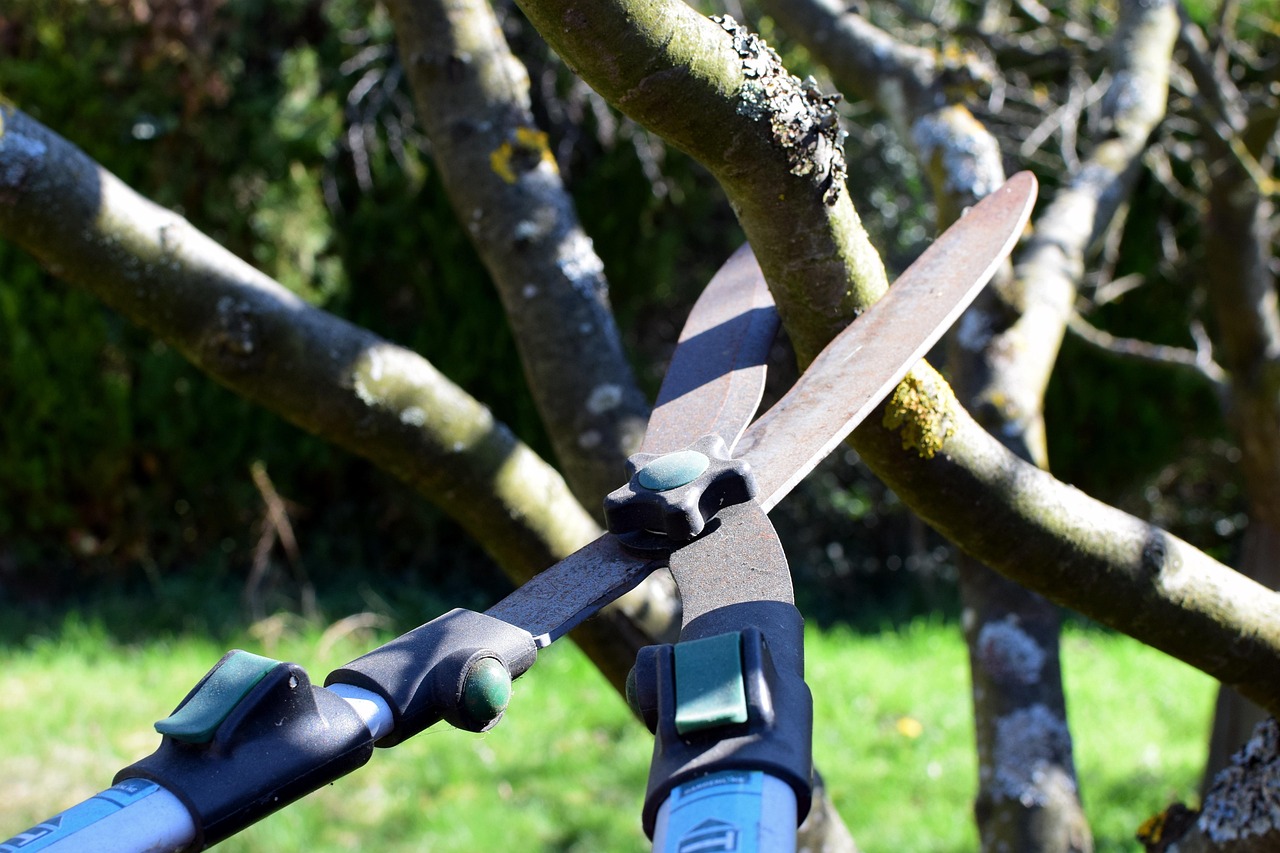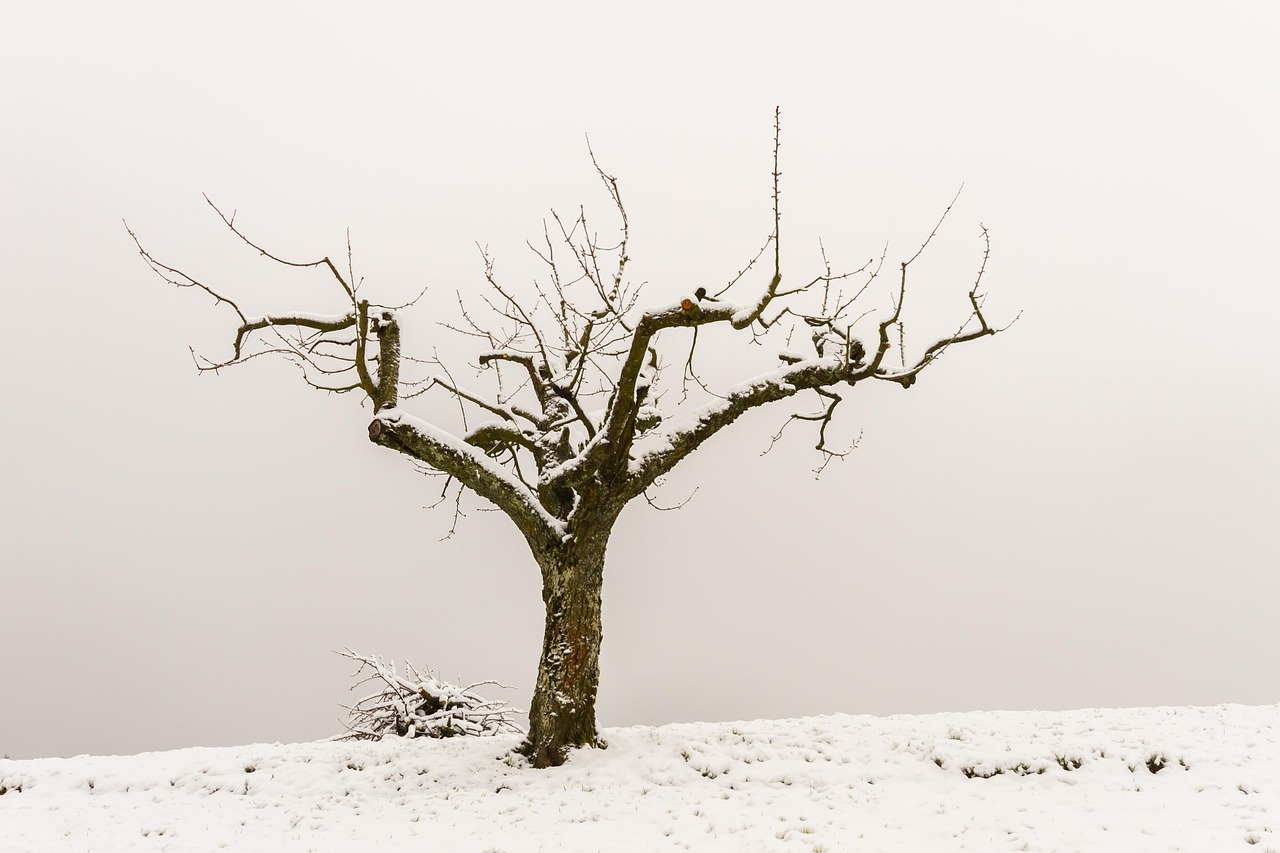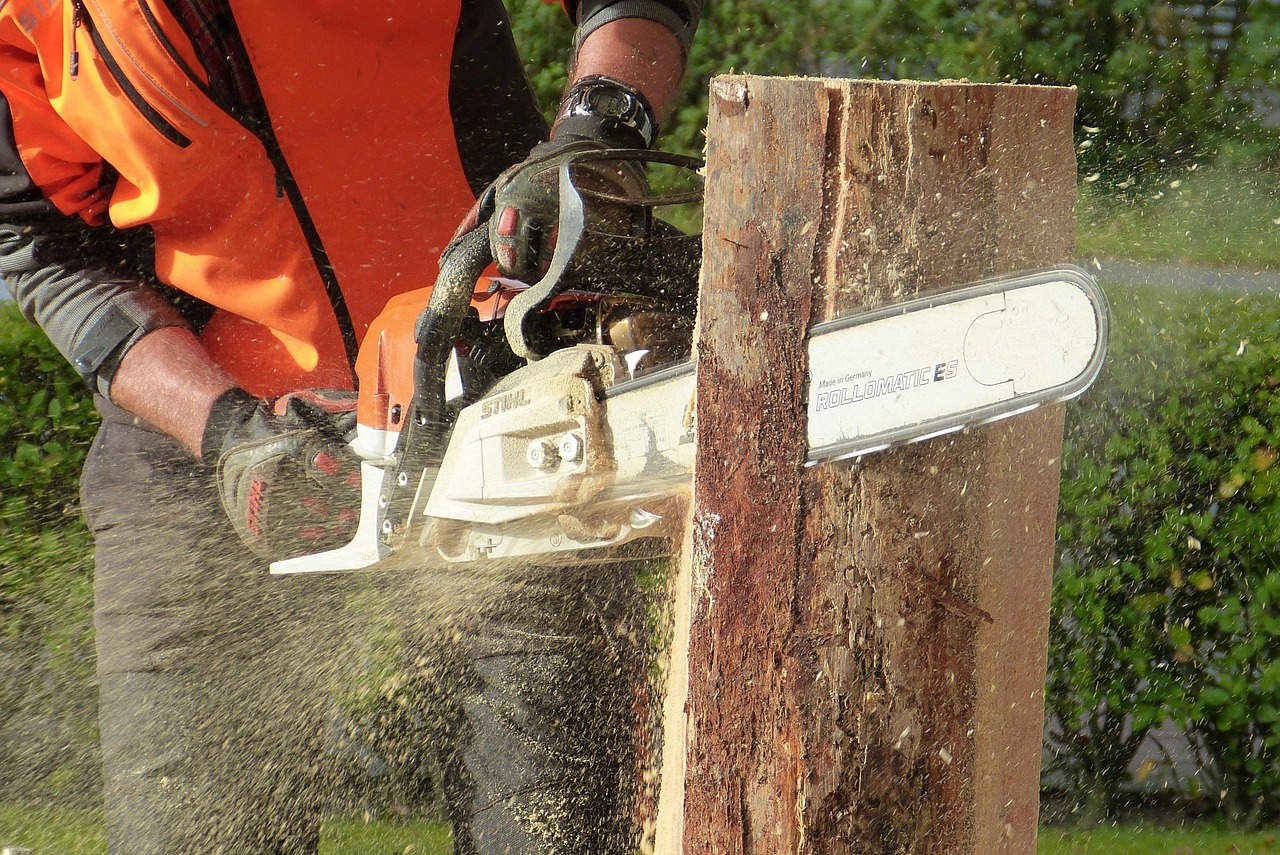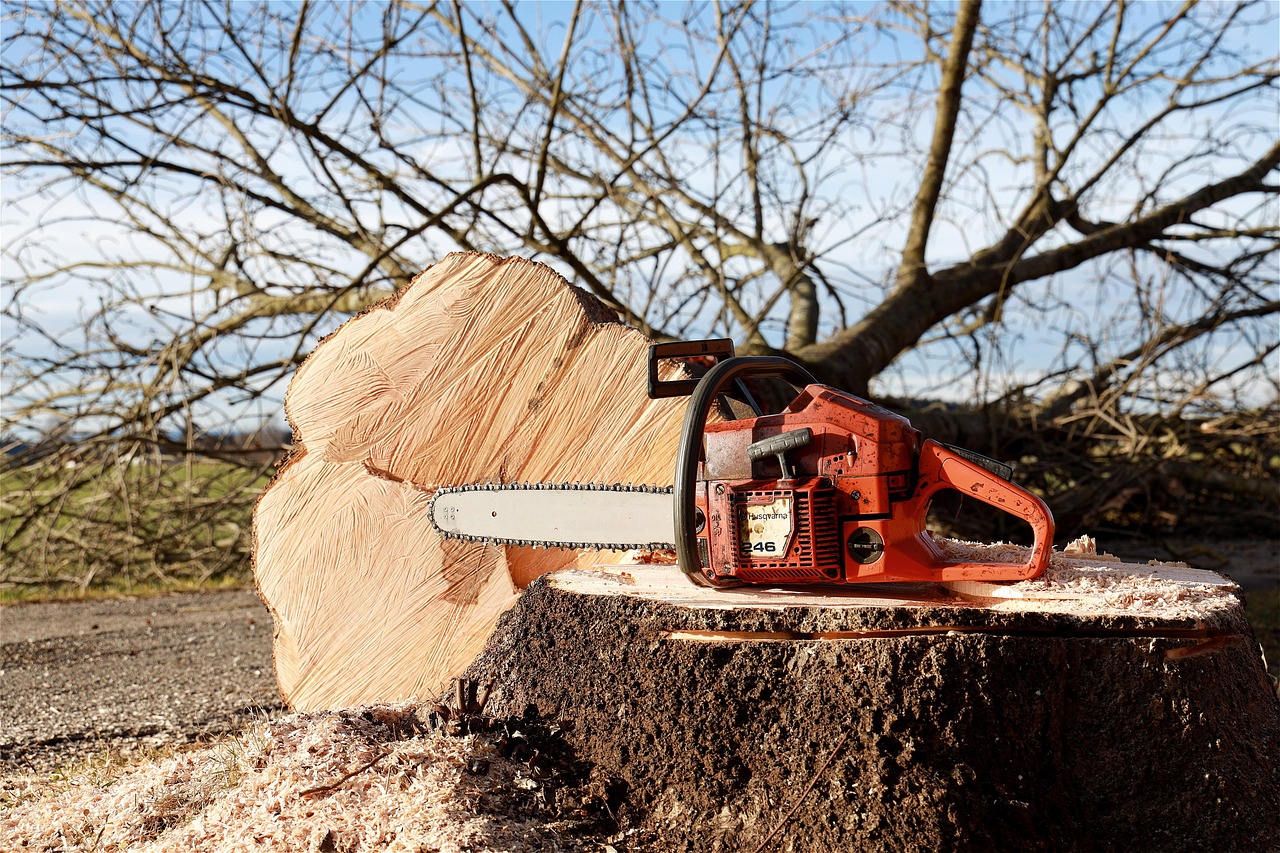During large tree pruning, avoid common mistakes such as cutting too much at once, neglecting safety measures, and failing to understand tree biology. These errors can lead to damage and health issues for the tree.
Pruning large trees is an essential maintenance task that helps enhance their health, appearance, and safety. Proper pruning encourages new growth, removes dead or diseased branches, and reduces the risk of falling limbs. However, it is a complex process that requires knowledge and skill to execute effectively. Many individuals take on this task without understanding the intricacies involved, resulting in mistakes that can harm the tree.

It is crucial to approach tree pruning with the right mindset. Understanding both the art and science of pruning can mean the difference between promoting healthy growth and causing irreversible damage. Large trees present unique challenges due to their size and structural complexity. Failing to recognize the specific needs of the tree species being pruned can lead to significant mistakes.
Common Mistakes in Large Tree Pruning
Here are some common mistakes to be aware of when pruning large trees:
- Over-pruning: Removing too many branches at once can stress the tree and lead to weak growth.
- Improper timing: Pruning at the wrong time of year can interfere with the tree’s natural growth cycle.
- Neglecting safety precautions: Failing to use proper safety gear or equipment can result in serious injuries.
- Ignoring tree biology: Not understanding how different species react to pruning can lead to poor outcomes.
- Using dull tools: Pruning with unsharpened tools can cause tearing and damage to branches.
Understanding these mistakes is critical for anyone looking to prune large trees effectively. Over-pruning, for example, can leave the tree vulnerable to pests and diseases. Trees need a certain amount of foliage to photosynthesize and thrive. Therefore, it is essential to prune judiciously and strategically.

The timing of your pruning also plays a vital role in the health of the tree. Most trees are best pruned during their dormant season, typically in late winter or early spring. This timing allows for recovery before new growth begins. Pruning during active growth can lead to excessive sap loss and weaken the tree.
Safety Precautions
When undertaking large tree pruning, safety should always be a top priority. Here are some safety precautions to consider:
- Wear protective gear, including gloves, goggles, and hard hats.
- Use a sturdy ladder if necessary, ensuring it is stable and secure.
- Ensure your tools are well-maintained and sharp.
- Be cautious of power lines and overhead obstacles.
- Have a first aid kit nearby in case of accidents.
Safety gear is essential when working with large trees. The risk of falling branches or equipment accidents increases significantly when pruning tall trees. Additionally, using sharp tools not only makes the job easier but also reduces the risk of injury from struggling with dull blades.

Understanding Tree Biology
A solid understanding of tree biology is essential for successful pruning. Each species of tree has specific needs and responses to pruning. Some trees have a more aggressive response to pruning cuts than others. For instance, oak trees should be pruned in late summer to minimize the risk of oak wilt disease.
The following table outlines key characteristics of different tree types regarding pruning:
| Tree Type | Optimal Pruning Time | Response to Pruning |
|---|---|---|
| Maple | Late winter | Produces sap; prune cautiously |
| Oak | Late summer | Aggressive growth; risk of oak wilt |
| Pine | Late spring | Minimal response; shape maintenance |
| Crape Myrtle | Late winter | Blooms on new growth; prune for shape |
This information highlights the importance of tailoring your approach based on the type of tree you are working with. Understanding how different trees respond to pruning will help you make informed decisions that promote health and longevity.

Being aware of these common mistakes can significantly improve your tree pruning efforts. With proper knowledge and preparation, you can ensure that your trees remain healthy and visually appealing while minimizing risks associated with improper pruning techniques.
Tools and Techniques for Effective Pruning
Choosing the right tools is essential for effective large tree pruning. The quality and type of tools can greatly influence your ability to perform clean and precise cuts. Using the appropriate tools not only makes the job easier but also helps prevent damage to the tree.
Essential Pruning Tools
Here are some common tools you will need for pruning large trees:
- Hand Pruners: Ideal for small branches, hand pruners are essential for making clean cuts.
- Loppers: Suitable for thicker branches, loppers provide better leverage and reach.
- Pruning Saws: These are specifically designed for cutting larger branches that cannot be handled by hand pruners or loppers.
- Chainsaws: For very large branches or entire limbs, a chainsaw may be necessary, but caution is required.
- Pole Pruners: These tools extend your reach and allow you to prune high branches without a ladder.
Maintaining your tools is equally important. Dull blades can cause tearing rather than clean cuts, which can lead to increased vulnerability to diseases. Always sharpen your tools before starting any pruning task.
Pruning Techniques
Understanding various pruning techniques can help you achieve the desired results without harming the tree. Here are some effective pruning methods:
- Thinning: This technique involves removing select branches to improve airflow and light penetration. It helps reduce the risk of disease and encourages healthy growth.
- Heading Back: This method shortens branches to encourage denser growth. It is commonly used on trees that develop long, leggy branches.
- Crown Reduction: This technique reduces the overall height and spread of the tree while maintaining its natural form. It is particularly useful for trees that have outgrown their space.
- Cleaning: Removing dead, damaged, or diseased branches improves the tree’s health and appearance. This should be done regularly as part of routine maintenance.
The choice of technique depends on the specific goals of your pruning efforts. For example, if your aim is to enhance sunlight exposure, thinning may be the most effective approach. On the other hand, if you need to control the tree’s size, crown reduction might be necessary.
Understanding Tree Growth Patterns
A thorough understanding of how trees grow is crucial for making informed pruning decisions. Different species exhibit unique growth patterns, which can affect how you should prune them. Factors such as branch structure, growth rate, and overall health need to be considered.
Growth Phases of Trees
Trees typically go through several growth phases:
- Juvenile Stage: In this phase, trees focus on establishing root systems and developing their structure. Minimal pruning is recommended during this time.
- Mature Stage: Trees enter their prime growth phase, where they expand in height and width. This stage benefits from regular pruning to maintain health and structure.
- Declining Stage: As trees age, they may become more susceptible to diseases and pests. Pruning in this stage focuses on removing dead or diseased wood to prolong the tree’s life.
Recognizing these phases can help you determine when and how much to prune. For example, juvenile trees should primarily be shaped rather than heavily pruned, while mature trees may require more extensive maintenance to ensure longevity.
The Role of Branch Structure
The structural integrity of a tree is another critical factor in pruning. Trees naturally develop branch structures that can either support or hinder their growth. Understanding these structures can prevent mistakes during pruning.
- Central Leader: Many trees have a dominant central leader, which is the main upward stem. Maintaining this leader is vital for overall stability.
- Co-Dominant Leaders: Trees with multiple leaders may face structural issues. Pruning one leader can reduce competition and enhance stability.
- Crown Shape: The natural crown shape varies by species. Preserving this shape during pruning helps maintain a tree’s aesthetic appeal and health.
A well-structured tree is less likely to experience issues such as breaking or splitting during storms. Therefore, understanding branch structure can guide your pruning decisions towards enhancing tree stability.
Environmental Considerations
The environment in which a tree grows affects its health and growth patterns. Factors such as soil quality, sunlight exposure, and moisture levels play significant roles in how a tree responds to pruning.
A healthy tree will respond better to pruning than one that is stressed by environmental conditions. It is essential to assess the tree’s surroundings before beginning any pruning work. Here are some environmental factors to consider:
- Soil Quality: Ensure that the soil provides adequate nutrients and drainage for the tree species being pruned.
- Sunlight Exposure: Trees that receive optimal sunlight tend to grow healthier and recover faster from pruning.
- Moisture Levels: Adequate moisture is vital for recovery post-pruning. Avoid pruning during dry spells unless necessary.
By taking these environmental factors into account, you can enhance your pruning practices and contribute positively to the tree’s overall health and longevity.
Identifying and Addressing Tree Health Issues
Before embarking on pruning, it’s crucial to assess the health of the tree. Identifying any existing health issues can help you make informed decisions about how and what to prune. Trees, like any living organism, can suffer from various problems that may impact their structure and growth.
Common Tree Health Problems
Understanding common tree health issues can help you identify potential problems during your assessment:
- Pests: Insects such as aphids, borers, and scale can weaken trees by feeding on leaves or bark. Signs of pest infestations include visible insects, sticky residue, or discolored leaves.
- Diseases: Fungal infections like root rot or powdery mildew can severely affect a tree’s vitality. Symptoms may include wilting leaves, unusual growths, or dead branches.
- Environmental Stress: Factors like drought, compacted soil, or poor drainage can lead to stress. Trees may exhibit drooping leaves, stunted growth, or leaf scorch.
- Physical Damage: Damage from storms, lawn equipment, or animal activity can create wounds that make trees susceptible to disease and pests.
Regular inspections can help catch these issues early. If you notice any signs of distress, it is essential to address them before pruning. Pruning a tree in poor health can exacerbate its problems and lead to further decline.
When to Prune Sick Trees
If a tree is suffering from health issues, careful consideration needs to be given regarding when and how to prune. Here are some guidelines:
- Prune During Dormant Period: If possible, prune sick trees during their dormant phase. This minimizes stress and allows for better recovery.
- Remove Affected Areas: Focus on removing dead or diseased branches first. This helps prevent the spread of pests and diseases to healthy parts of the tree.
- Avoid Heavy Pruning: Do not over-prune a sick tree. Light pruning is preferable to minimize stress while still promoting airflow and light penetration.
Taking these steps can help improve the overall condition of the tree, making it more resilient against further issues.
The Importance of Proper Cutting Techniques
Using correct cutting techniques is critical in ensuring that your pruning efforts are effective and do not harm the tree. Improper cuts can lead to damage that may take years for the tree to recover from.
Cutting Techniques to Use
Here are some proper cutting techniques to follow during large tree pruning:
- Angle Cuts: Make cuts at a slight angle to promote water runoff and prevent rot. A proper angle also helps reduce the surface area exposed to pathogens.
- Leave the Collar: When cutting branches, avoid cutting too close to the trunk. Leave the branch collar intact, as this tissue helps facilitate healing.
- Three-Cut Method: For larger branches, use the three-cut method. First, make an undercut about a third of the way through the branch, then make a second cut on top until the branch breaks free. Finally, make a clean cut at the trunk.
This three-cut method helps prevent bark tearing and minimizes injury to the trunk. Proper cuts accelerate healing and reduce the risk of disease entry points.
Avoiding Common Cutting Mistakes
While understanding proper techniques is essential, avoiding common cutting mistakes is equally important:
- Flush Cuts: Never cut flush against the trunk as it removes vital growth tissue and increases susceptibility to rot and disease.
- Topping: Avoid topping the tree, which removes large sections of the crown. This practice can lead to weak regrowth and structural problems.
- Cuts Too Close: Cutting too close to the branch collar can hinder healing and invite pathogens into the tree.
Avoiding these mistakes will help maintain the tree’s health while ensuring that your pruning efforts yield positive results.
The Role of Professional Help
Sometimes, large tree pruning can be daunting or beyond an individual’s skill set. It is essential to recognize when professional assistance is necessary for safe and effective pruning.
When to Hire a Professional Arborist
A professional arborist brings expertise in tree care that can be invaluable. Here are scenarios where you should consider hiring a professional:
- Large Trees: If you are dealing with particularly large trees that require specialized equipment or skills for safe pruning.
- Complex Situations: If the tree is near power lines or structures, professional help is essential for safety reasons.
- Pest and Disease Management: If you suspect serious pest infestations or diseases that require advanced treatment methods.
An arborist can provide tailored advice and services that ensure both your safety and the health of your trees. They possess knowledge about local regulations regarding tree care and may also offer solutions for trees at risk of failure.
Engaging professionals may incur costs; however, the long-term benefits of maintaining healthy trees often outweigh these expenses.
Additional Considerations for Successful Tree Pruning
In addition to the previously discussed topics, several other considerations can significantly enhance your tree pruning efforts. Addressing these factors can lead to healthier trees and more effective pruning outcomes.
Seasonal Considerations
Understanding how seasons affect tree health and growth can play a crucial role in timing your pruning activities:
- Spring: Many trees are actively growing during this season. Pruning in spring can stress trees, as they are focused on producing new leaves and flowers.
- Summer: Early summer is suitable for light pruning, particularly for shaping and removing dead wood. Avoid heavy pruning during this period.
- Fall: As trees prepare for dormancy, fall is generally not the best time for pruning. However, if you notice any dead or damaged branches, they should be removed to prevent further harm.
- Winter: Late winter is often the best time for major pruning tasks, as trees are dormant. This timing minimizes stress and allows for recovery once growth resumes.
By aligning your pruning schedule with seasonal factors, you can optimize the health and growth of your trees.
Post-Pruning Care
After pruning, it is essential to provide proper care to help the tree recover effectively:
- Watering: Ensure the tree receives adequate water following pruning, especially if done during dry periods. This helps promote healing and new growth.
- Mulching: Applying mulch around the base of the tree can retain moisture and improve soil quality. Avoid placing mulch directly against the trunk.
- Monitoring: Keep an eye on the tree for signs of stress or disease following pruning. Early detection can make a significant difference in treatment outcomes.
These care practices can enhance recovery and help the tree regain its vitality after pruning.
Community Resources and Education
Many communities offer educational resources and workshops on tree care and maintenance. Engaging with local gardening clubs, extension services, or arboretums can provide valuable insights into proper pruning techniques and tree health management. These resources often host events where you can learn from experts and connect with fellow tree enthusiasts.
Participating in these community activities fosters a better understanding of local species and their specific needs, enhancing your overall gardening experience.
Final Thoughts
Pruning large trees can be a rewarding yet challenging task. By understanding the common mistakes to avoid, employing proper techniques, and considering the tree’s health and environment, you can significantly improve your success rate. Remember that proper preparation, knowledge of tools, and awareness of seasonal impacts are essential components of effective tree pruning.
Additionally, recognizing when to seek professional help ensures that your trees receive the best care possible. A skilled arborist can provide valuable assistance in navigating complex pruning scenarios while ensuring safety and promoting tree health.
Ultimately, taking a thoughtful approach to tree pruning not only enhances the beauty of your landscape but also contributes to the longevity and vitality of your trees. With the right knowledge and practices, you can maintain a thriving environment for both your trees and other flora in your garden.
As you embark on your pruning journey, remember that each cut has implications for the overall health of the tree. Strive to make informed decisions that will benefit your trees in the long run. Happy pruning!
